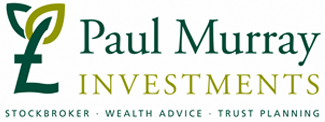Optimising your tax position is paramount in the run-up to the financial year end
Taxes, as we know, are one of the two great inevitables in life. As the UK tax system continues to grow ever more complex, and with more responsibility being placed on the individual to get their own tax right, ensuring that you receive the best professional advice to optimise your tax position is paramount.
Appropriate tax planning could help you substantially reduce tax liabilities and defer tax payments. The tax planning advice you need will depend on your particular circumstances and how complicated your financial affairs are. We have provided details of a number of tax planning areas you may wish to review, especially as we are now in the run-up to the 2015/16 financial year
end on 5 April.
It’s good to give
Personal income over £150,000 is taxed at 45%. However, because the personal allowance is reduced by £1 for every £2 of net income over £100,000, for income between £100,001 and £121,200 the effective top rate is 60%. Individuals with incomes near these thresholds could potentially reduce their tax liabilities by reducing their taxable income below £100,000 or £150,000. This may be achieved by changing income into non-taxable forms, giving income yielding assets to a spouse with lower income, deferring income, making pension contributions or making payments to charity.
Exchanging cash payments
It is already common for employers to offer arrangements allowing employees to exchange a cash payment for approved share options, benefits in kind or pension contributions in lieu of salary. Employees who exchange income (for example, to take them below the £100,000 threshold) in return for a tax-free pension contribution made by their employer would save Income Tax and NIC.
Taxable dividend income
The effective rate of tax on taxable dividend income, for example, from shares not held in an Individual Savings Account (ISA) or pension fund, will rise by up to 6% for some taxpayers from 6 April 2016. However, there will also be a new £5,000 nil rate band on dividend income, so the exact rate of tax anyone pays on their dividend income will depend on the amount they receive and their other income in 2016/17.
If you receive a significant amount of dividend income from your own or a family company, there may be advantages in bringing forward dividends into the 2015/16 tax year. However, if you are normally a basic-rate taxpayer, taking a large dividend that pushes your total income into the higher rate of tax or results in a loss of personal allowances could be counter-productive.
Conversely, if you receive relatively low levels of taxable dividend income, it may be beneficial to defer dividends until 2016/17 so that you can benefit from the new dividend nil rate band. You should obtain professional advice on the most appropriate option for your particular situation.
Rearranging substantial investments
If you have substantial investments outside an ISA or other tax-efficient wrapper, consider rearranging them so that they produce either a tax-free return or a return of capital taxed at a maximum of only 28%, rather than income taxable at a maximum of 45%.
Company cars tax
Each year, the taxable benefits on company cars are effectively increased by reducing the level of CO2 emissions that trigger each 1% increase in benefit. For example, a car with emissions of 150g/km triggers a 25% taxable benefit in 2015/16, but the same car will give rise to benefits of 27% in 2016/17 and 29% in 2017/18.
It may be worth using your own car for business travel and claiming a tax-free mileage allowance from your employer. If fuel has been provided for private use, consider whether full reimbursement of the cost to the company would be a cheaper option than paying the fuel scale charge, which is based on the car’s CO2 emissions.




